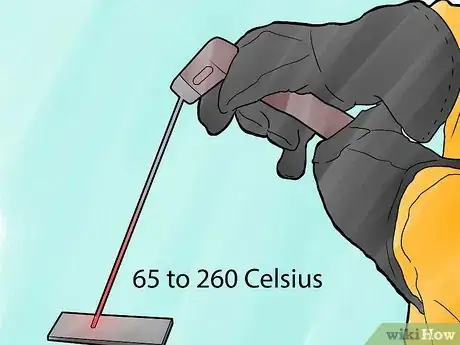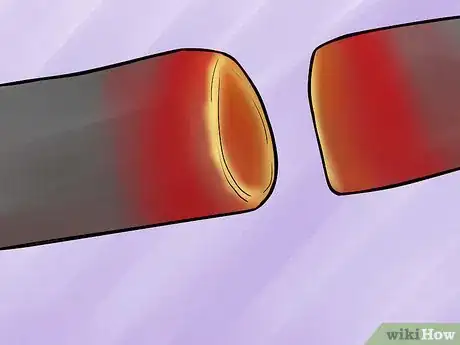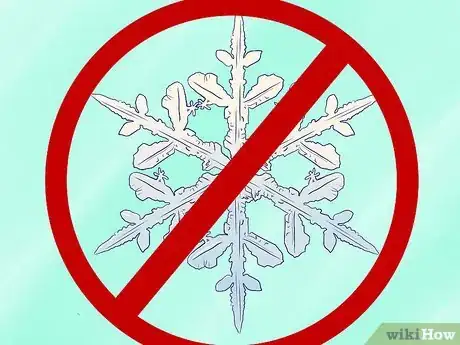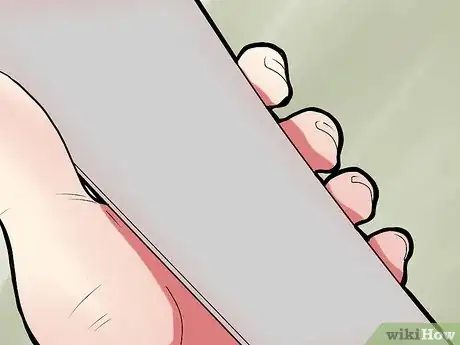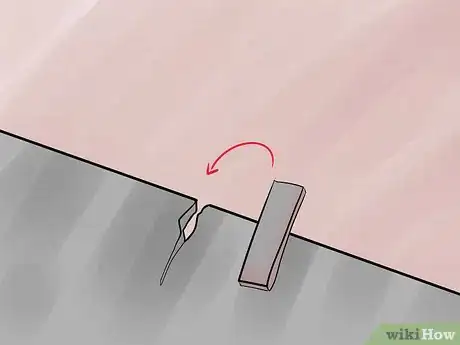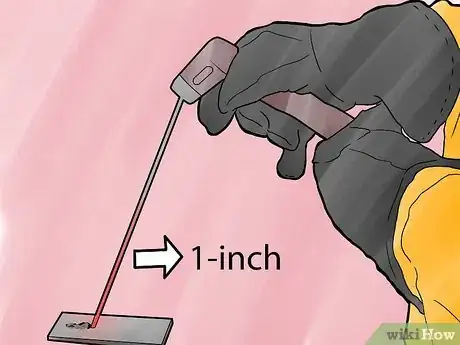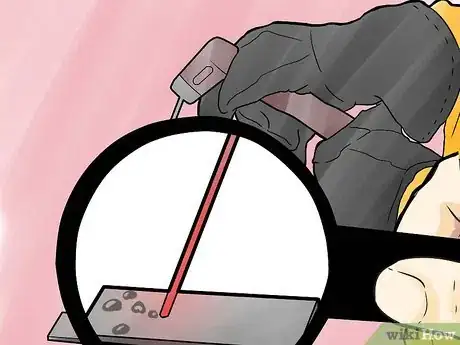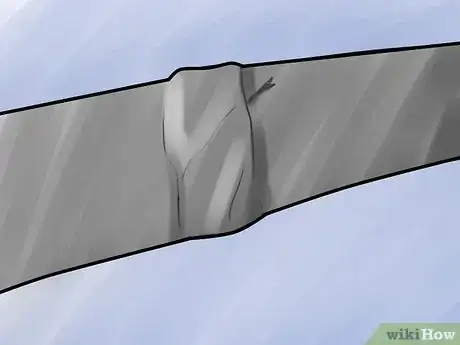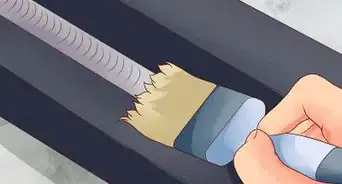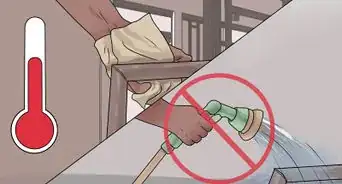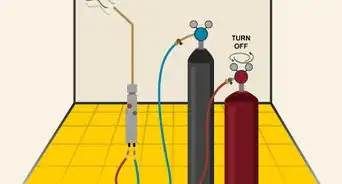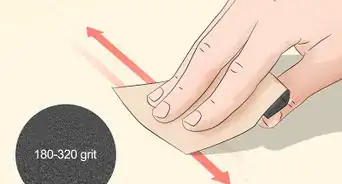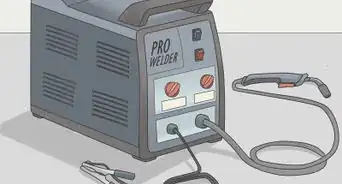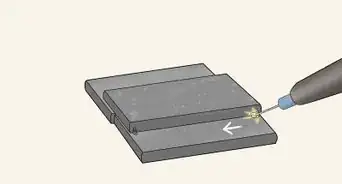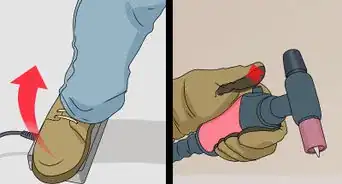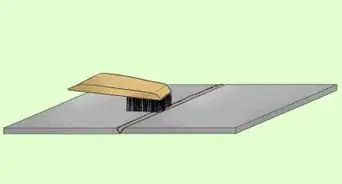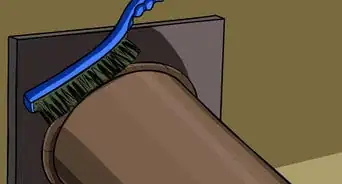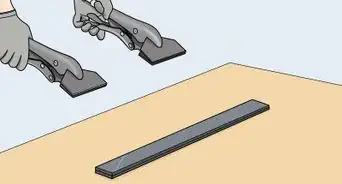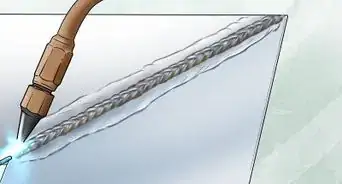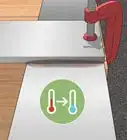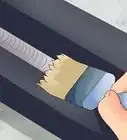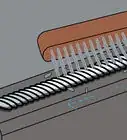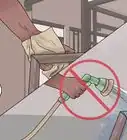wikiHow is a “wiki,” similar to Wikipedia, which means that many of our articles are co-written by multiple authors. To create this article, 22 people, some anonymous, worked to edit and improve it over time.
There are 7 references cited in this article, which can be found at the bottom of the page.
This article has been viewed 231,813 times.
Learn more...
Welding cast iron is a precision task that requires high heat, and often expensive equipment. You should not attempt it on the strength of reading a brief Internet article, no matter how informative. However, understanding the basics can help you prepare for a qualification course, or to make better decisions for welding projects run by qualified personnel under your supervision.
Steps
Temperature and Environment
-
1Keep the cast iron out of the range of 150 to 500 degrees Fahrenheit (65 to 260 Celsius). This is a danger zone for cast iron, during which it is the most unstable and difficult to work with. This will usually mean heating or cooling the iron before and during the work.
-
2Preheat the sections that require work to the 500 to 1,200 °F (260 to 649 °C) range (260 to 649 Celsius).[1]Advertisement
-
3Keep nearby iron cool, but not cold. If cold, you can sometimes run the machinery to get it up to the desired temperature.
-
4Keep your repair patch cool enough that you can touch it safety with your bare hand. Hotter patches can ruin the weld, and cold patches will take too long to heat up to welding temperature. Consult your engineering specifications documents to know the best temperature for the exact iron formula you are using in your project.
Welding
-
1Repair cracks and rips by attaching a cast part that serves as a patch between intact parts of the cast iron.[2]
-
2Weld patches in place using short welds, about 1 inch (2.5 cm) long each. This will keep the nearby metal from overheating as you work.[3]
-
3Use studding to reinforce major cracks. This technique involves drilling holes into the cast iron surface, then screwing the patch in place. You then weld the screws in place as part of the repair job.[4]
-
4Expect to find small cracks in the iron when your welding is done. This is a normal and unavoidable part of welding cast iron. Use sealing compound for joints and sections that must be watertight.
Community Q&A
-
QuestionWelding cast iron, do I use ac or dc welder? I have welded cast but it has been close to 40 years and two brain stem strokes, so I do not remember.
 Community AnswerUse high nickel content welding rods. The proper polarity will be specified on the box.
Community AnswerUse high nickel content welding rods. The proper polarity will be specified on the box. -
QuestionCan metal be heated before it's welded?
 Community AnswerYes. Sometimes it helps to heat it before it's welded, depending on the type of metal. Also, keep in mind, your metal will heat as you weld. The heat from your welding will travel through the metal, making it hot.
Community AnswerYes. Sometimes it helps to heat it before it's welded, depending on the type of metal. Also, keep in mind, your metal will heat as you weld. The heat from your welding will travel through the metal, making it hot. -
QuestionI need to repair a cracked 50 mm cast iron body machine. Should I use low hydrogen or high nickle?
 Community AnswerGo with a nickel rod if you’re arc welding. You can also get away with brazing cast iron with excellent results. You may wish to use additional pieces of carbon steel flatstock to increase the holding strength; it will help distribute the loads exerted to the area of repair. If the casting breakage is not a result of an anomaly (poor original quality, machine “crash,” physically dropped), the original casting may be insufficient in strength to bear the current mechanical load(s) imposed by the machinery, in which case, if no supplements are added (regardless of the achievement of an excellent repair joint), you may find it necessary to have at it again at some point down the road.
Community AnswerGo with a nickel rod if you’re arc welding. You can also get away with brazing cast iron with excellent results. You may wish to use additional pieces of carbon steel flatstock to increase the holding strength; it will help distribute the loads exerted to the area of repair. If the casting breakage is not a result of an anomaly (poor original quality, machine “crash,” physically dropped), the original casting may be insufficient in strength to bear the current mechanical load(s) imposed by the machinery, in which case, if no supplements are added (regardless of the achievement of an excellent repair joint), you may find it necessary to have at it again at some point down the road.
Warnings
- Keep fire suppression handy when working with your welding rig. Although cast iron is not flammable, you are -- and so are many of the materials that are part of the welding rig.⧼thumbs_response⧽
Things You'll Need
- Welding rig
- Safety goggles
- Cast iron patches
- Welding gloves
- Welding apron or work suit
References
- ↑ https://www.esabna.com/euweb/oxy_handbook/589oxy15_5.htm
- ↑ https://makeitfrommetal.com/how-to-weld-cast-iron-uncatastrophically/
- ↑ http://www.weldingtipsandtricks.com/welding-cast-iron.html
- ↑ http://weldguru.com/OLDSITE/CastIron.html
- ↑ https://www.brazing.com/Support/Procedures_and_techniques/CastIronWeldingProcedures.aspx
- http://www.esabna.com/euweb/oxy_handbook/589oxy15_1.htm
- http://www.weldingtipsandtricks.com/welding-cast-iron.html
About This Article
To weld cast iron, start by preheating the section you’ll be working to a temperature between 500 to 1200 degrees F so that it’s stable enough to work with. Then, fix any cracks or rips in the surface by using a small piece of iron as a repair patch. Weld the repair patch in place using short welds, about 1 inch long, to keep the nearby metal from overheating. Afterwards, seal off any small cracks in the joints with sealing compound to create a watertight surface. For more advice, including how to tell when you should reheat or cool the iron as you work, keep reading.
